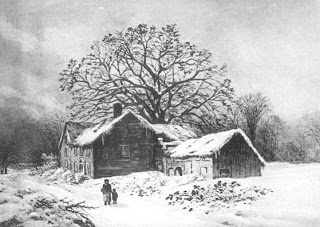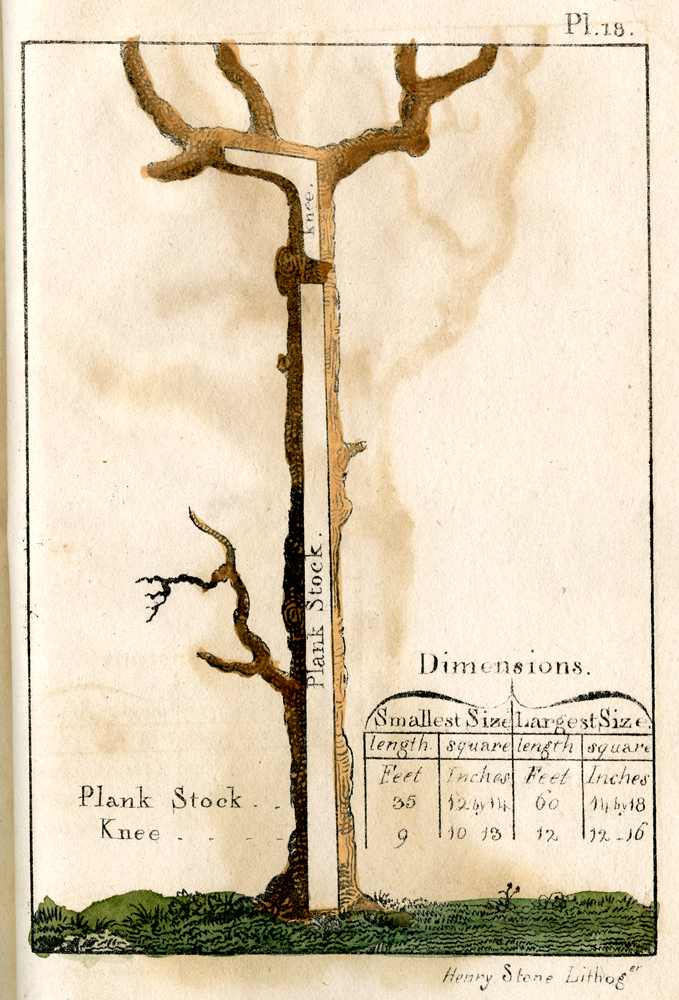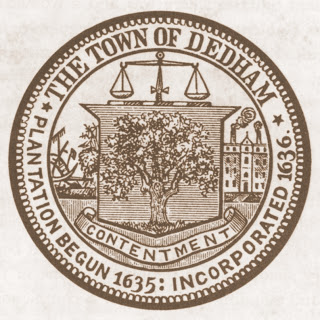This is the story of a tree.
Trees shade and beautify our streets and homes and provide timber for building a million useful things. Until the middle of the 19th century, when iron hulled vessels became common, shipbuilders were among the top consumers of wood. A ship like USS Constitution required about 1,500 mature trees to build, and thousands more to maintain for so many years.
The decline in European timber stocks produced panic among some naval authorities. As British Admiral Cuthbert Collingwood lamented, “If the country gentlemen do not make it a point to plant oaks wherever they will grow, the time will not be very distant when to keep our navy we must depend entirely on captures from the enemy…I wish everybody thought on this subject as I do; they would not walk through their farms without a pocketful of acorns to drop in the hedge-sides, and then let them take their chance.”
Even in America, with its vast tracts of timber, shipwrights frequently had difficulty sourcing timber near navigable waterways. In a nation of farmers, most land near settled areas had been cleared for generations.
While so many of its cousins fell to the woodsmen’s axes over the years, one towering white oak in Dedham, Massachusetts, lived to the see the changes brought by four centuries.
The oak was a mature tree when English colonists incorporated Dedham in 1636. When William Avery constructed his sturdy timber-frame house sometime after 1650, the tree’s spreading branches lent a veil of shade to his barnyard. In the terrible winter of 1723, when the snow lay so thick over the landscape that the residents could not access their woodlot, another Avery chopped off the top of the tree to keep his family from freezing.

By the 1790s, the Avery Oak’s gnarled and crooked branches spread more than 90 feet from a trunk five feet in diameter. In 1794, Congress passed the Naval Armament Act, authorizing the construction of six frigates. While the American ships featured live oak frames (Quercus viginiana from the Georgia Sea Islands), shipbuilder and naval architect Joshua Humphreys specified white oak for the hull planking. Timber merchants from New Jersey to Maine scrambled to find old growth trees that had the straight trunks to cut long runs of plank, but also crooks and bends that could supply the hundreds of hanging, standing, and lodging knees needed to support deck beams.

Nicholson must have eyed the massive Avery Oak every time he came to town. At last, he approached Jonathan Avery and made an offer. For $70, axemen would come and fell the tree and haul its trunk and limbs to Boston. For a New England farmer, it was a tidy sum. To put the offer in perspective, the able seamen who first manned the ship in 1798 made only $17 per month.
Despite the potential windfall, Mr. Avery would not sell it. As legend has it, Mrs. Avery adamantly refused to see the tree go and convinced her husband it had to stay.
What was it about that tree that put it beyond the reach of mere dollars and cents? Could it be that the roots of the tree and the Avery family roots were inseparably intertwined?
The old tree, spared the axe and ocean tempests, long outlived all the actors in this story.
In 1886, the Dedham Historical Society took possession of the Avery Oak. Over the following decades, the Society devoted considerable resources to keep the declining tree alive. In the Hurricane of 1938, part of it blew down. Finally, in July 1973 a fierce thunderstorm rolled across the south shore. Amid high winds and flashes of lightning, the venerable oak toppled to the ground.

April 26 is National Arbor Day, so plant a tree. Who knows what story it might tell a few centuries hence. Though gone for decades, the Avery Oak lives on in Dedham’s town seal, an unrivaled symbol of strength and longevity.
The Author(s)
Matthew Brenckle
Research Historian, USS Constitution Museum
Matthew Brenckle was the Research Historian at the USS Constitution Museum from 2006 to 2016.